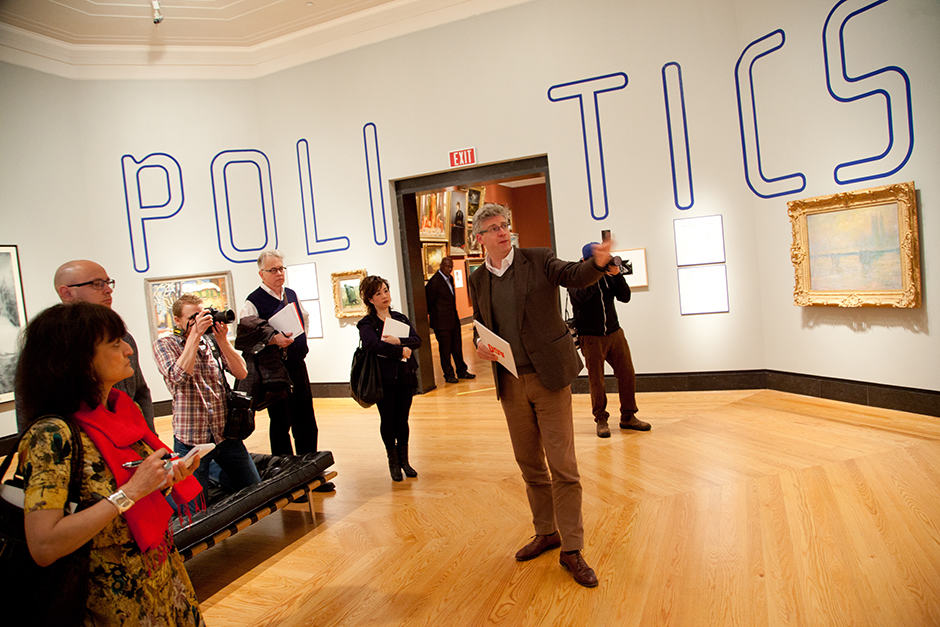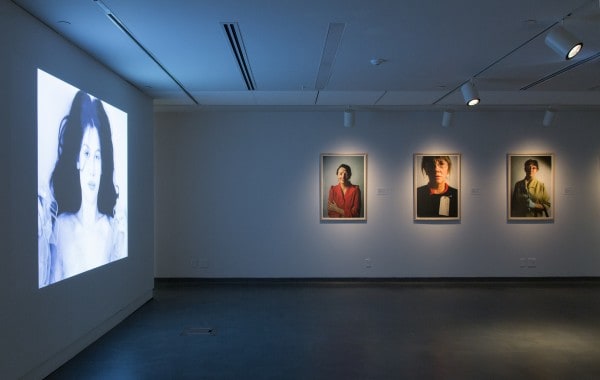Art as Therapy
Closes April 26
The Art Gallery of Ontario
This exhibit is not confined to one space inside the AGO; Art as Therapy is on display in five different rooms with five different themes — love, sex, money, politics, and nature, respectively.
There are arrows pointing to each running across the floors of the AGO, as well as blurbs featuring the hashtag #artastherapy everywhere. To quote one of such blurbs, “none of the art at the AGO was made to be seen in the context in which you will see it #artastherapy.”
In this sense, the art collected in each of the rooms only has the room’s theme in common, with pieces ranging from the sixteenth to the twentieth century in different styles and mediums. All of these works are placed out of their original context, but in some way provide an answer to different questions and concerns.
Some are more modern, such as, “Problem: Thinking my ideal age range is 25-32,” which are then “answered” by century-old pieces.
My personal favourite rooms were love and money, with Art as Therapy: Money attracting the largest audience on Wednesday night. It featured an interactive element with a video of philosopher Alain de Botton commenting on the theme in each room in a short video, while simultaneously displaying people’s drawings and comments made on iPads during their visits.
A thoughtful experiment in trying to engage the “average” person to connect with art, this exhibit appeals to a large and diverse audience and not just art gallery aficionados.
Burn With Desire / Anti-Glamour
Closes April 5
The Ryerson Image Centre
I should begin by saying that these were my favourite exhibits in recent memory. Burn with Desire and Anti-Glamour, both curated by Gaëlle Morel, are situated across the hall from one another. They work as sister shows in representing a stark contrast of human experience, both the dazzling and the painfully oppressive.
Burn with Desire: Photography and Glamour is an uplifting and beautiful display of the glamourized life that videography and photography have shaped through the twentieth and twenty-first centuries.
From photographs of Greta Garbo and Marilyn Monroe to Annie Leibovitz’s notoriously well-known Vanity Fair Hollywood issue covers, glamour and the images we associate with it are explored in a thematic and aesthetic way.
While this display explores the romanticized aspects of our lives, Anti-Glamour: Portraits of Women features artists from various backgrounds whose work addresses female representation, in both a political and poetic way. The oppressive and painful roles that women are often restricted to and within are displayed through works of art such as Sugar Blessing by Leila Zahiri, an Iranian-Canadian artist. Her short video and photography references a traditional Iranian custom of weddings when two cones of hardened sugar are rubbed together as a show of good luck for the newlywed couple.
In the short video, Zahiri, who was forced into an arranged marriage before moving to Canada, rubs the two cones vigorously over her head as she cries and grows angrier as a sign of defiance.
The pairing of the two shows creates a thoughtful yet aesthetic experience of life, particularly in its display of the contradictory roles often assumed by women.



